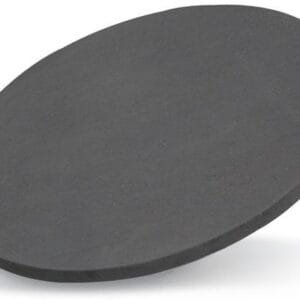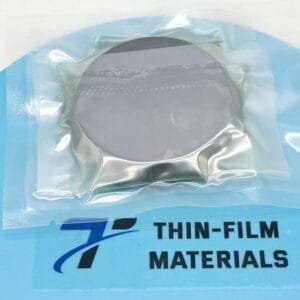| Material Type | Praseodymium Nickel Oxide |
| Symbol | PrNiO |
| Color/Appearance | Various colors, Solid |
| Melting Point (°C) | N/A |
| Theoretical Density (g/cc) | N/A |
| Water Solubility | Insoluble |
| Sputter | RF, RF-R, DC |
| Type of Bond | Indium, Elastomer |
Praseodymium Nickel Oxide Sputtering Targets
TFM offers high-quality Praseodymium Nickel Oxide (PrNiO₃) sputtering targets, a material renowned for its unique electronic, magnetic, and optical properties. Praseodymium Nickel Oxide is a rare perovskite oxide that combines praseodymium and nickel to produce a compound with significant interest in advanced material science applications. This compound is particularly useful in the development of thin films for sensors, electronics, and catalysts.
Key Features and Advantages
High Purity – Our Praseodymium Nickel Oxide Sputtering Targets are available with a 99.9% purity, ensuring precise film deposition and reliable performance in thin film applications.
Magnetic Properties – PrNiO₃ exhibits magnetoresistance and magnetic properties, making it an ideal choice for spintronic and magnetic sensor applications.
Electrochemical Stability – This compound offers excellent stability in electrochemical environments, which is crucial for energy storage devices like supercapacitors and batteries.
Optical Properties – Praseodymium Nickel Oxide has optical characteristics that are beneficial for photoelectronic applications, including photodetectors and solar cells.
Custom Sizes – Available in various sizes, TFM’s targets cater to both industrial-scale production and small-scale research needs.
Stable Performance – TFM’s sputtering targets provide uniform film deposition, ensuring high-quality films with consistent properties.
Specifications
Purity: 99.9%
Target Types Available:
Circular Targets: Diameter ≤ 14 inches, Thickness ≥ 1mm
Block Targets: Length ≤ 32 inches, Width ≤ 12 inches, Thickness ≥ 1mm
Applications
Magnetic Materials – Praseodymium Nickel Oxide’s magnetic properties make it suitable for spintronic devices, magnetic memory applications, and magnetic sensors.
Catalysis – The material’s electrochemical stability and catalytic behavior are valuable in catalytic converters and energy-efficient processes.
Optoelectronics – With its optical properties, it is ideal for use in photodetectors, light-emitting devices, and solar energy applications.
Energy Storage – PrNiO₃ is used in the development of supercapacitors and batteries due to its stability in electrochemical environments.
Thin Film Deposition – Praseodymium Nickel Oxide sputtering targets are used in thin film deposition for high-performance semiconductor devices, including transistors and photovoltaic cells.
Manufacturing Process
Cold Pressing & Sintering – Our manufacturing process ensures high density and quality consistency, critical for producing thin films with excellent electrical and magnetic properties.
Elastomer Bonding – Targets are bonded to a backing plate to enhance handling and film deposition uniformity.
Cleaning & Packaging – Each target undergoes a meticulous cleaning process to ensure it is free from contaminants, followed by careful packaging to protect it from environmental exposure during shipment.
Options
Custom Sizes – TFM offers custom-sized targets to meet the requirements of various applications, from research and development to large-scale production.
Research and Development – Smaller sizes are available for R&D purposes, enabling testing and prototyping for new applications.
Sputtering Target Bonding Service – Enhance the performance of your sputtering targets with target bonding services, which improve the sputtering efficiency and consistency of film deposition.
Industry Impact
Praseodymium Nickel Oxide Sputtering Targets are critical in advanced materials science due to their unique electromagnetic properties. These targets are essential in the development of high-performance electronics, magnetic devices, energy storage systems, and optoelectronic devices. TFM’s high-purity sputtering targets are designed to meet the stringent demands of industries such as semiconductor manufacturing, energy storage, spintronics, and photovoltaics, providing superior performance for both research and commercial applications.





Reviews
There are no reviews yet.